Money
Nuwakot farmers happy growing strawberries
Okharpauwa resident Kanchha Man Tamang, a member of the Japanese Agricultural In-service Training Institute (Jaiti) Nepal, started growing strawberries on his farm in Kakani with six plants.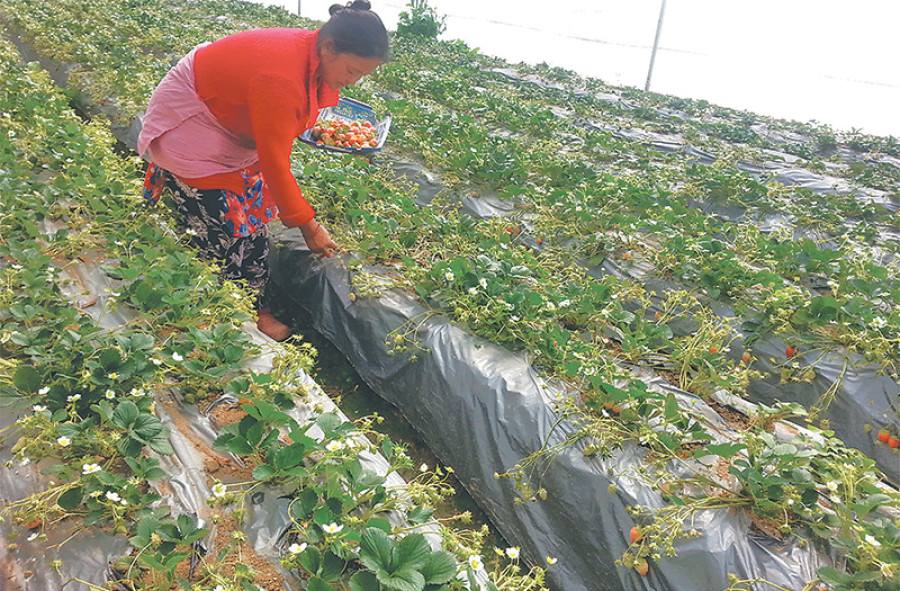
Krishna Thapa
Okharpauwa resident Kanchha Man Tamang, a member of the Japanese Agricultural In-service Training Institute (Jaiti) Nepal, started growing strawberries on his farm in Kakani with six plants.
Now strawberry farming has spread to over 1,300 hectares in Nuwakot, mostly in Kakani and nearby Okharpauwa. Inspired by Tamang’s success as a strawberry farmer, his neighbours started growing the fruit too.
Strawberry farmers in Kakani and Okharpauwa in Nuwakot district are earning more than Rs100,000 a year. These places have a favourable climate and soil conditions for strawberry farming.
Kakani and Okharpauwa produce 400 tonnes of strawberry annually, according to the District Agricultural Office. Yearly sales are worth more than Rs60 million.
The introduction of two high-yield varieties, Ankhime and Eyeberry, and use of tunnel farming to grow strawberries have led to increased cultivation of strawberry. Four years ago, farmers had to bring their strawberries to Kathmandu to sell them. Now they have set up the Strawberry Farming and Entrepreneurship Association that collects strawberries and markets them.
Strawberries are graded into A, B and C categories. Grade C sells for Rs100 per kg, Grade B costs about Rs200 per kg, while the best quality, Grade A, sells for about Rs300 per kg.
There are about 40 farmers growing strawberries inside polythene tunnels using a technique called tunnel farming. Tilak Lama, chairman of Nawa Bihani Cooperative, said, “A decade or two ago, we grew maize and millet which did not provide much income. Now the whole village grows strawberries.”
Lama, also the chairman of the Strawberry Farming and Entrepreneurship Association, said that farmers were thinking of designating wards 2 and 5 in Kakani Rural Municipality as Strawberry Pocket Region. The strawberries produced here are shipped to supermarkets in Kathmandu.
Lama said that the government should encourage farmers to plant strawberries. He said the association aimed to promote entrepreneurship through membership. More than 100 farmers are members of the association.
Likewise, Okharpauwa local Hira Krishna Lama feeds his family of four with the money he makes from growing strawberries. She has planted both Ankhime and Eyeberry varieties of strawberries.
Previously, the common variety planted in the village was the Nyoho variety of strawberry. Ankhime is smaller but has a higher yield. Eyeberry is relatively
large but low-yield. Instead of planting strawberries on slopes, she now plants them inside tunnels. Most farmers sell strawberries in the market through the cooperative.
After testing soil conditions, tunnels were built with Japanese support to plant Ankhime and Eyeberry strawberries.
Bir Maya Thing, a resident of Kakani, experimented with strawberry farming 13 years ago by planting plants discarded by her neighbour. She now earns more than Rs100,000 annual growing strawberries.
Kamal Raj Gaire, chief of the district agriculture office, said that the office had been providing grants of Rs50,000 to farmers producing strawberries using the tissue culture method.
The office is also providing insurance to 11 farmers to protect their farms against risks related to production and income. Gaire added that insurance had encouraged other farmers to plant strawberries.




 12.12°C Kathmandu
12.12°C Kathmandu



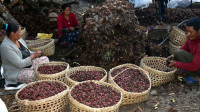

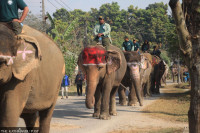

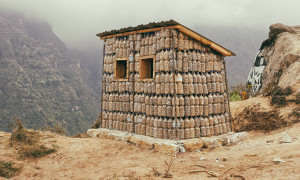

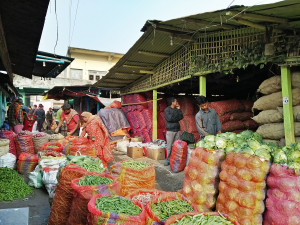



%20(1).jpg&w=300&height=200)
